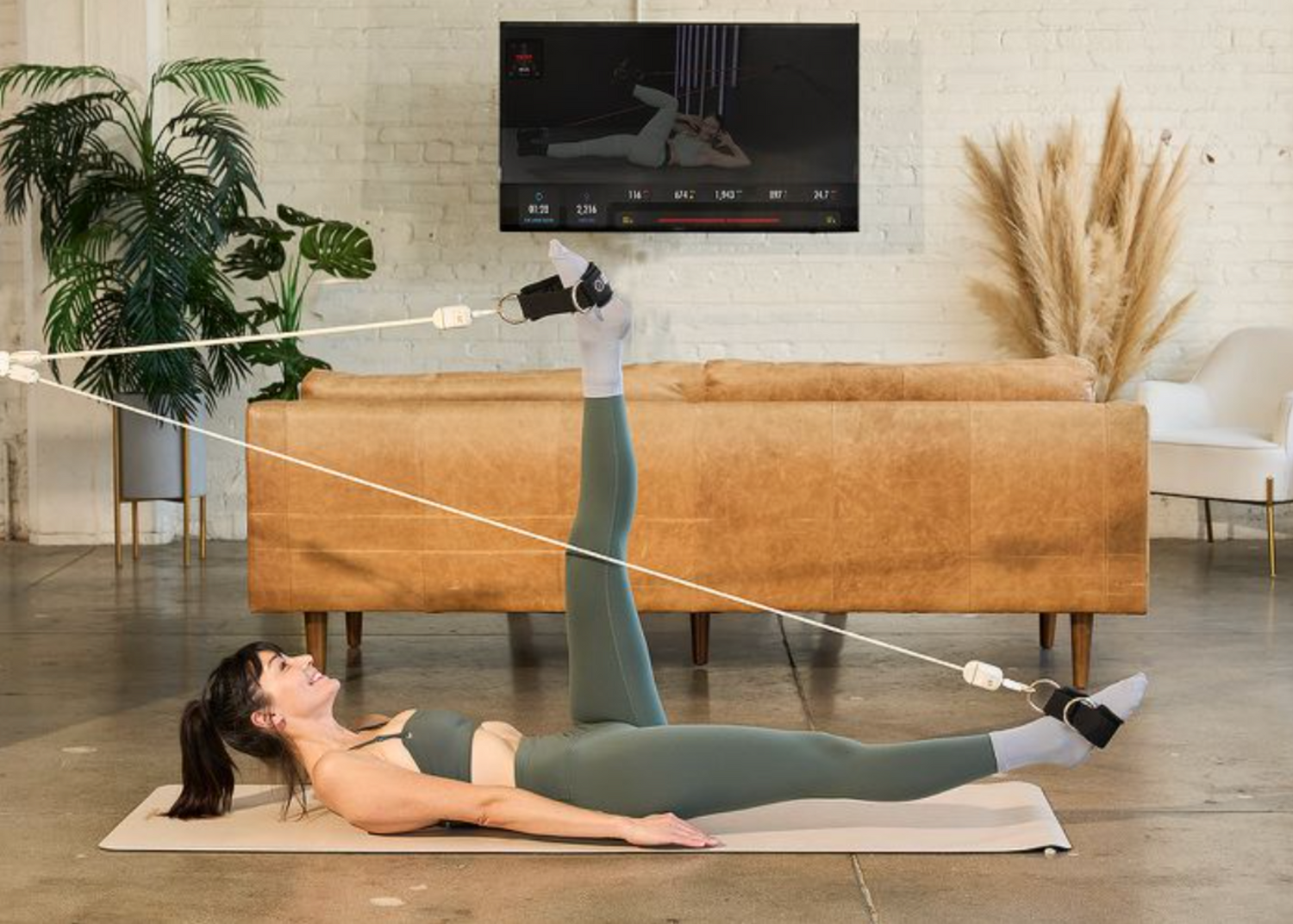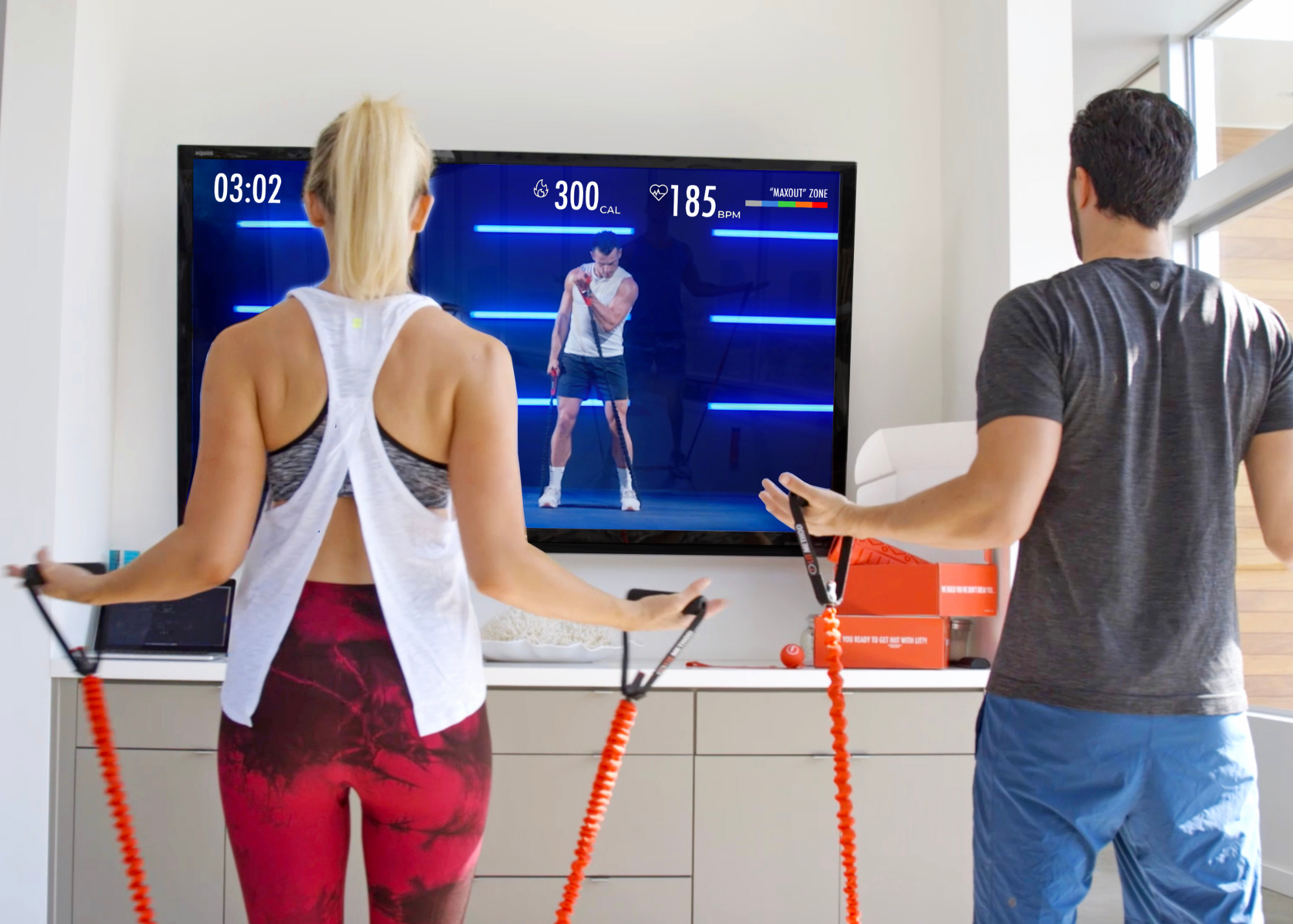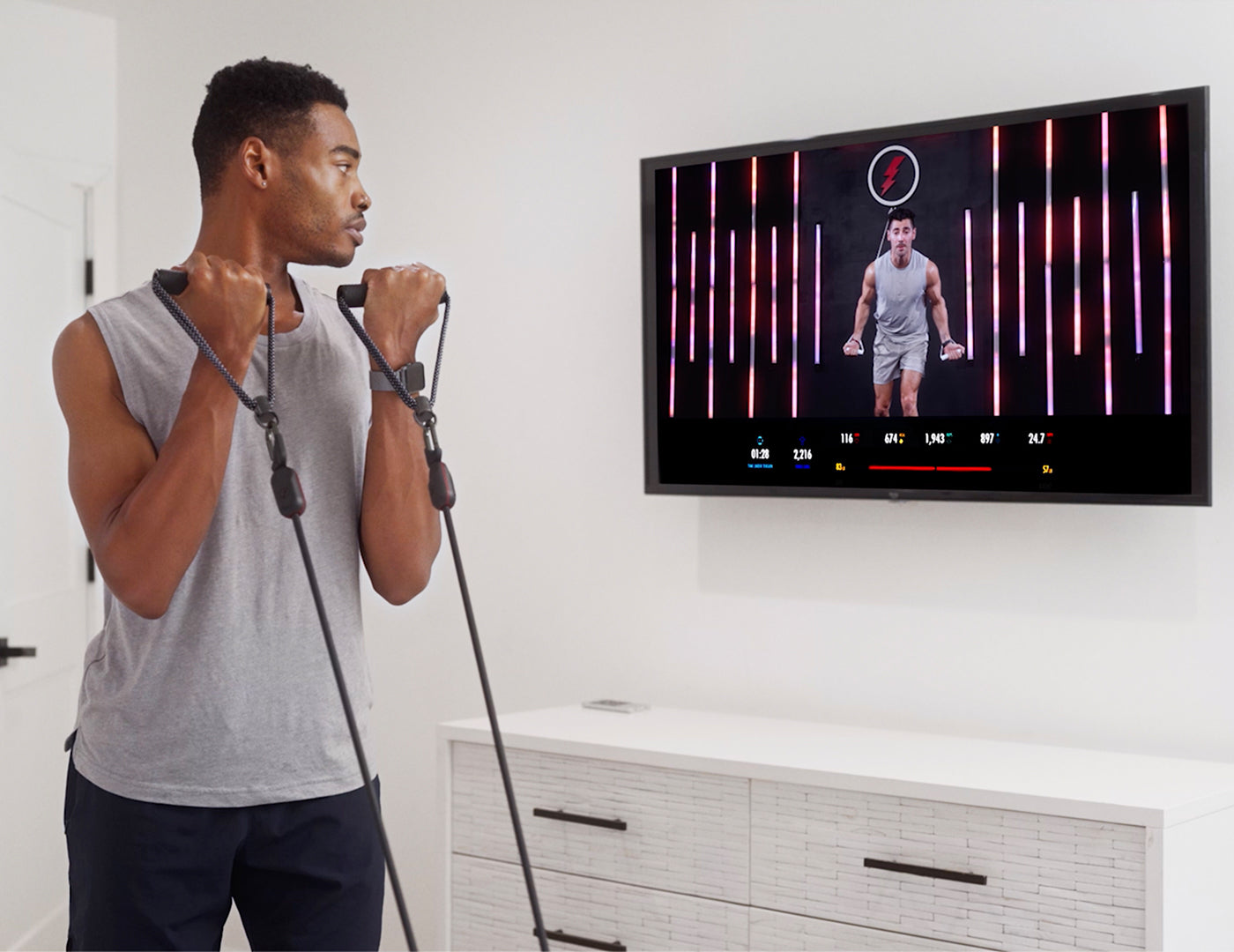Whether you are a beginner, an experienced lifter, or someone recovering from an injury, you can use resistance bands for strength training. Unlike free weights, resistance bands put less pressure on your joints, reducing the chances of injury.
While resistance bands can be used for full-body workouts, they can be beneficial for lower-body workouts targeting the legs and glutes. Low-intensity band exercises reduce the stress on joints, and resistance bands also force you to focus on your form. This helps you target all the different muscles in your lower body. Resistance bands are a great option whether you are a beginner or have experience. We recommend resistance band workouts for legs and glutes because they provide the extra support that helps you quickly adapt to the resistance and start more intense workouts to gain strength faster.
Benefits of resistance band workouts for legs
Several clinical studies have evaluated the benefits of resistance band exercises for the legs and glutes. The outcomes of these studies support that resistance bands for leg workout result in the following:
1. Increased muscle activation: A study on the effect of resistance bands on hip myoelectric activity found that using bands during leg exercises such as squats and lunges results in greater muscle activation in the quads and glutes region than traditional exercises without resistance bands. The increased muscle activation can result in greater muscle strength.
2. Improved flexibility: A 2019 study on rugby players found that resistance bands incorporated into their training improve joint flexibility and range of motion in their lower body. Scientists believe that this improvement is because the resistance from the bands creates spaces within joints during stretching. Furthermore, a meta-analysis of elderly participants showed resistance bands could improve muscle flexibility and balance.
3. Decreased knee pain: A study published in the Clinical Journal of Sports Medicine found that resistance band exercises improved knee pain in knee osteoarthritis patients. The study also highlighted that resistance band exercises could improve knee function and significantly reduce pain.
Overall, resistance band workouts for legs are a safe and effective way to improve muscle strength in your legs and glutes through improved muscle activation, flexibility, and endurance.
Getting started with resistance band workouts for legs is easy. Here are the most effective resistance band exercises for glutes and legs.
Top resistance band exercises for legs
1. Resistance band squats

- Stand with your feet hip-width apart.
- Put the resistance band around your thighs, above the knees. Extend your arms in front.
- Engaging your core and tightening your glutes sit into a squat, slowly pushing your butt back and down.
- Stretch the resistance band by moving your knees out.
- Maintain your weight on your heels and firmly press against the ground to stand back up.
Compared to bodyweight squats, resistance band squats are more effective because your knees are working against the resistance of the bands preventing knees from caving in.
2. Fire hydrant

- Place the resistance band just above your knee.
- Take a tabletop position with your hips directly above your knees and shoulders parallel to your wrists.
- Lift your left knee out to the side to engage your glutes and outer thighs. Ensure that you are not shifting your hips. Keep your core tight for upper body stability.
- Slowly bring the left knee back to the starting position.
- Do ten reps before switching to the right knee.
The fire hydrant is one of the best resistance band exercises for the glutes. It activates the gluteus medius and minimus, which are the smaller muscles (and not easiest to target) supporting the gluteus maximus, the most significant muscle in your glutes.
3. Lateral band walk

- Put the resistance band around the ankles and stand with your feet hip-width apart. Keep your knees slightly bent.
- Step your left foot to the side, engaging your outer thighs and slightly hinging at the hips. At this position, your feet will be shoulder-distance apart.
- Now bring your right foot closer to the left foot but not close enough to loosen the band.
- Alternate this stepping motion moving your feet out and in for 10 reps on each side.
This exercise provides an intensive inner thigh workout with bands. It might look simple, but lateral band walks engage most muscle groups in the inner and outer thighs.
4. Banded hamstring curl

- Anchor the resistance band at the level of your feet.
- Loop the other end of the resistance band through your ankles. Keep your feet slightly apart to maintain tension in the band. Lie down on your chest.
- Keep your legs straight, and pull the heels towards your hips. You must feel the stress in your hamstrings.
- Slowly lower your legs in the starting position, maintaining muscle tension.
- Banded hamstring curl performs hinge and knee flexion movements, which trains your hamstrings to the best possible extent.
5. Banded glute bridge pulses

- Lie on your back, keep your feet hip-width apart, and place the band above your knees.
- Engage your core by keeping it tight and push your hips up until your knees are at a 90-degree angle creating a bridge. Hold the position for a second.
- Come back down to the starting position in a controlled motion. Be sure to push your knees out against the band to keep them shoulder-width apart.
It is one of the best resistance band exercises for legs as it engages the entire back of your legs and glutes. If it seems easier, you can lift either of your feet above the ground to make it more challenging. Just keep in mind to do it on alternate legs.
6. Quad resistance band stretch

- Lying on your side, loop the resistance band around your top foot.
- Hold the other end of the resistance band with your arms bent over your head and behind your back.
- Bend your knee to bring your foot and lower leg behind your back.
- Pull the resistance band up.
- Relax your grip and repeat.
- Do ten reps before switching to the other foot.
This resistance band stretching exercise will stretch your leg, relaxing muscles, especially the quads.
If you are looking for some more comprehensive ankle band exercises that can enhance your leg workouts, check out this insightful article on ankle band exercises that can also help you to improve your ankle strength and stability.
Sample resistance band workouts for legs
Here is a complete resistance band workout to target legs and glutes for anyone. Beginners and intermediate exercisers can start with recommended sets, but more advanced lifters must aim for more repetitions to achieve muscle fatigue with the exercises.
Maintain a slow eccentric phase and control during a workout. Focus on maintaining the fullest range of motion to increase muscle activation and boost training effectiveness.
Warm-up
- 2-3 sets (10 reps) of resistance band squats.
- 2-3 sets (15 reps) of lateral band walk.
Workout
- 4 sets of (15-20 reps) banded hamstring curl.
- 4 sets (10-15 reps) of the fire hydrant.
- 2-3 sets (10 reps) of resistance band squats.
- 2-3 sets (15 reps) of banded glute bridge pulses
Cool down
- 2-3 sets (10 reps) of quad resistance band stretch
LIT AXIS™ for band exercises for legs

LIT AXIS™ is an impressive improvement over traditional resistance bands that utilizes science and product design to create the smartest and most versatile resistance band training system. It offers adjustable resistance up to 200 LBS.

The USP of LIT AXIS™ is that it overcomes the limitations of conventional resistance bands by offering metric monitoring, reporting, and adjustment features. This smart resistance band has sensors that can monitor your reps, resistance loads, time under tension, muscle imbalance, and several other metrics you can access through your phone. It’s a genuinely injury-proof approach to building a balanced body.
Conclusion
Resistance band training is a great way to strengthen your legs and glutes while keeping the risk of injury minimal. The resistance band workouts for legs shared here are a balanced exercise plan to build stronger and toned glutes, hamstrings, and quadriceps.




